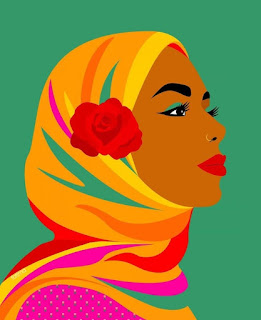Constitution Day & the Women Behind
On the occasion of Constitution Day, we
are remembering and celebrating the 15 women Constituent Assembly members and
their crucial contribution in the making of the Indian constitution.
1. Ammu Swaminathan
Ammu Swaminathan was an
upper-caste Hindu family in Anakkara of Palghat district, Kerala. She formed
the Women’s India Association in 1917 in Madras, along with Annie Besant,
Margaret Cousins, Malathi Patwardhan, Dadabhoy and Ambujammal. She became a part
of the Constituent Assembly from the Madras Constituency in 1946.
2.
Dakshayani Velayudhan
Dakshayani Velayudhan was
born on July 4, 1912, on the island of Bolgatty in Cochin. She leads the (then
titled) Depressed Classes.
In 1945, Dakshayani was nominated to the Cochin Legislative
Council by the State Government. She was the first and only Dalit woman to be
elected to the Constituent Assembly in 1946.
3.
Begum Aizaz Rasul
Malerkotla was born in a
princely family and married to the young landowner Nawaab Aizaz Rasul. She was
the only Muslim woman member of the Constituent Assembly. With the enactment of
the Government of India Act 1935, Begum and her husband joined the Muslim
League and entered electoral politics. In the 1937 elections, she was elected
to the UP Legislative Assembly.
She was elected to the Rajya Sabha in 1952 and was a member of the
Uttar Pradesh Legislative Assembly from 1969 to 1990.
4.
Durgabai Deshmukh
Durgabai Deshmukh was born in
Rajahmundry on July 15, 1909. When she was 12 years old, she participated in
the Non-Co-operation Movement and along with Andhra
Kesari T Prakasam, she participated in the Salt Satyagraha movement
in Madras city in May 1930.
In 1936, she established the Andhra
Mahila Sabha, which within a decade became a great institution of education and
social welfare in the city of Madras.
5. Hansa Jivraj Mehta
Born on July 3, 1897, to
the Dewan of Baroda Manubhai Nandshankar Mehta, Hansa Mehta studied journalism
and sociology in England. Along with being a reformer and social activist, she
was also an educator and writer.
She wrote many books for children in Gujarati and also translated
many English stories including the Gulliver’s Travels. She was elected to the
Bombay Schools Committee in 1926 and became President of the All India
Women’s Conference in 1945-46.
6.
Kamla Chaudhary
Kamla Chaudhary was born in
an affluent family of Lucknow, however, it was still a struggle for her to
continue her education. Moving away from her family’s loyalty to the imperial
government, she joined the nationalists and was an active participant in the Civil
Disobedience Movement launched by Gandhi
in 1930.
She was vice-president of the All India Congress Committee in its
54th session and was elected as a member of the Lok Sabha in the late
seventies. Chaudhary was also a celebrated fiction writer and her stories
usually dealt with women’s inner worlds or the emergence of India as a modern
nation.
7.
Leela Roy
Leela Roy was born in
Goalpara, Assam in October 1900. Her father was a deputy magistrate and
sympathised with the Nationalist Movement. She graduated from Bethune College
in 1921 and became an assistant secretary to the All Bengal Women’s Suffrage
Committee and arranged meetings to demand women’s rights.
In 1923, with her friends, she founded the Dipali
Sangha and established schools which became centres of
political discussion in which noted leaders participated. Later, in 1926, the
Chhatri Sangha, an association of women students in Dacca and Kolkata, was
founded. She became the editor of a journal, Jayashree.
8.
Malati Choudhury
Malati Choudhury was born
in 1904 to a distinguished family in the then East Bengal, now Bangladesh. In
the year 1921, at the age of 16, Malati Choudhury was sent to Santiniketan
where she got admitted to Viswa-Bharati.
During the Salt Satyagraha, Malati Choudhury, accompanied by her
husband joined the Indian National Congress and participated in the movement.
They educated and communicated with the people to create a favorable
environment for Satyagraha.
9.
Purnima Banerjee
Purnima Banerjee was the secretary of the Indian
National Congress committee in Allahabad, Uttar Pradesh.
She was one of a radical network of women from Uttar Pradesh who stood at the
forefront of the freedom movement in the late 1930s and ’40s.
She was arrested for her participation in the Satyagraha
and Quit India Movement. One of the more striking aspects of Purnima
Banerjee’s speeches in the Constituent Assembly was
her steadfast commitment to a socialist ideology. As secretary for the city
committee, she was responsible for engaging and organising trade unions, Kisan
meetings and work towards greater rural engagement.
10.
Rajkumari Amrit Kaur
Amrit Kaur was born on February 2,
1889, in Lucknow, Uttar Pradesh. She was India’s first Health Minister and
she held that post for ten years. She did her educated at the Sherborne School
for Girls in Dorset, England, but gave it all up to become Mahatma Gandhi’s
secretary for 16 years. She was the founder of the All India Institute
of Medical Sciences (AIIMS) and argued for its autonomy.
She was a firm believer in women’s education, their participation in sports and
their healthcare.
11. Renuka Ray
Renuka Ray lived in London to complete
her BA from the London School of Economics. She submitted a document titled Legal
Disabilities of Women in India; A Plea for a Commission of Enquiry’ in
the year 1934, as legal secretary of the AIWC.
From 1943 to 1946 she was a member of
the Central Legislative Assembly, then of the Constituent Assembly and the
Provisional Parliament. In 195257, she served on the West Bengal Legislative
Assembly as Minister for Relief and Rehabilitation. In 1957 and again in 1962,
she was a member of Malda of the Lok Sabha.
12. Sarojini Naidu
Sarojini Naidu, also known
as the
Nightingale of India, was born on February 13, 1879, in
Hyderabad, India. She was the first Indian woman to become the president of the
Indian National Congress and the first woman to be appointed as an Indian state
governor.
13.
Sucheta Kriplani
Sucheta Kriplani was born in 1908 in present-day Haryana’s Ambala
town. She is especially remembered for her role in the Quit
India Movement of 1942.
Kripalani also established the women’s wing of the Congress party
in 1940. Post-independence, Kripalani’s political stint included serving as an
MP from New Delhi and then also as the Minister of Labour, Community
Development and Industry in Uttar Pradesh’s state government.
14.
Vijalakshami Pandit
Vijaya Lakshmi Pandit was
born in Allahabad on August 18, 1900, and she was the sister of India’s first
Prime Minister, Jawaharlal Nehru. She was imprisoned by the British on three
different occasions, in 1932-1933, 1940, and 1942-1943.
Pandit’s political career began with her election to the Allahabad
Municipal Board. In 1936, she was elected to the Assembly
of the United Provinces, and in 1937 became minister of local
self-government and public health the first Indian woman ever to become a
cabinet minister.
15.
Annie Mascarene
Annie Mascarene was born into a Latin Catholic family of
Thiruvananthapuram, Kerala. She was the first woman to be part of the
Travancore State Congress Working Committee. She was one of the leaders of the movements for
independence and integration with the Indian nation in the Travancore State.



Comments
Post a Comment